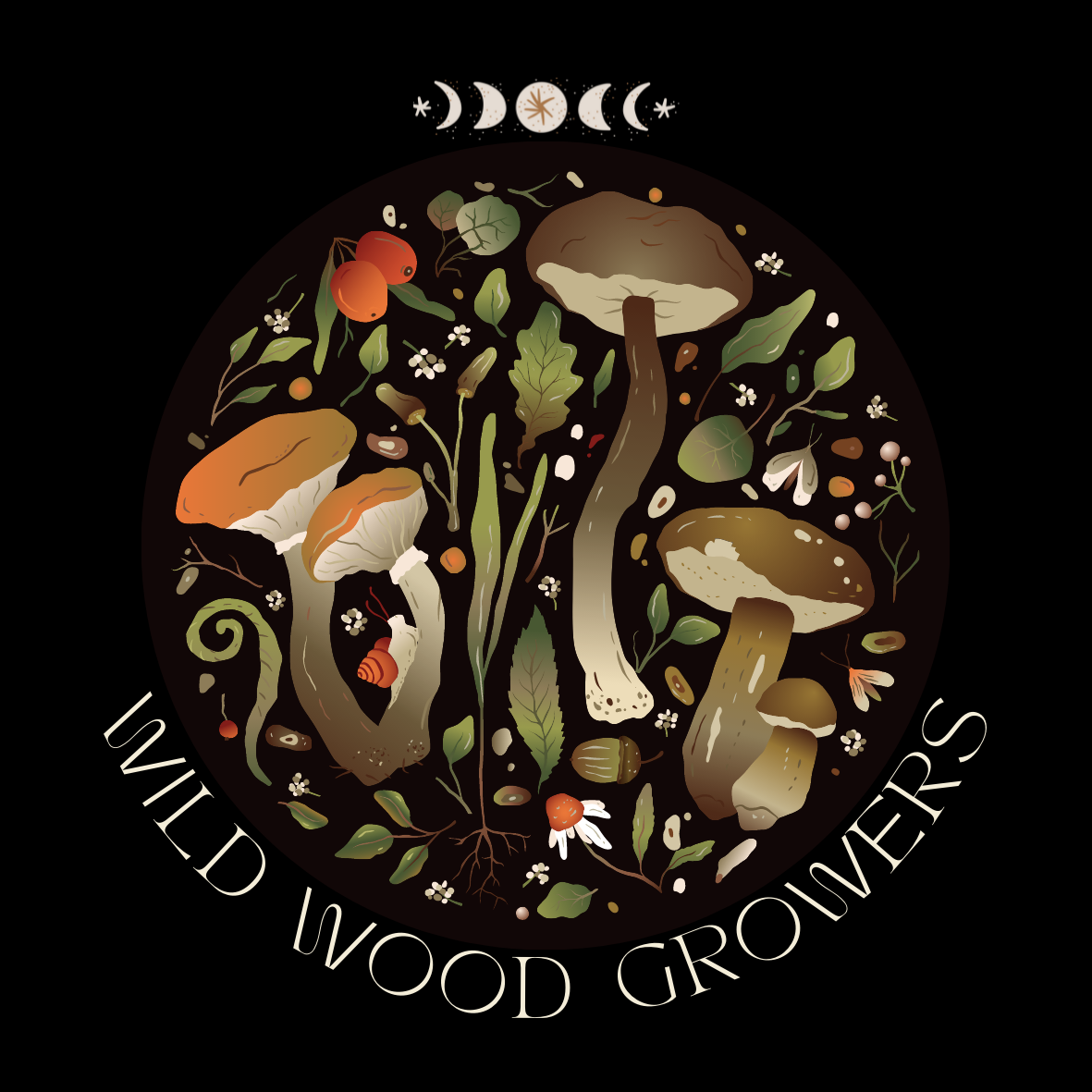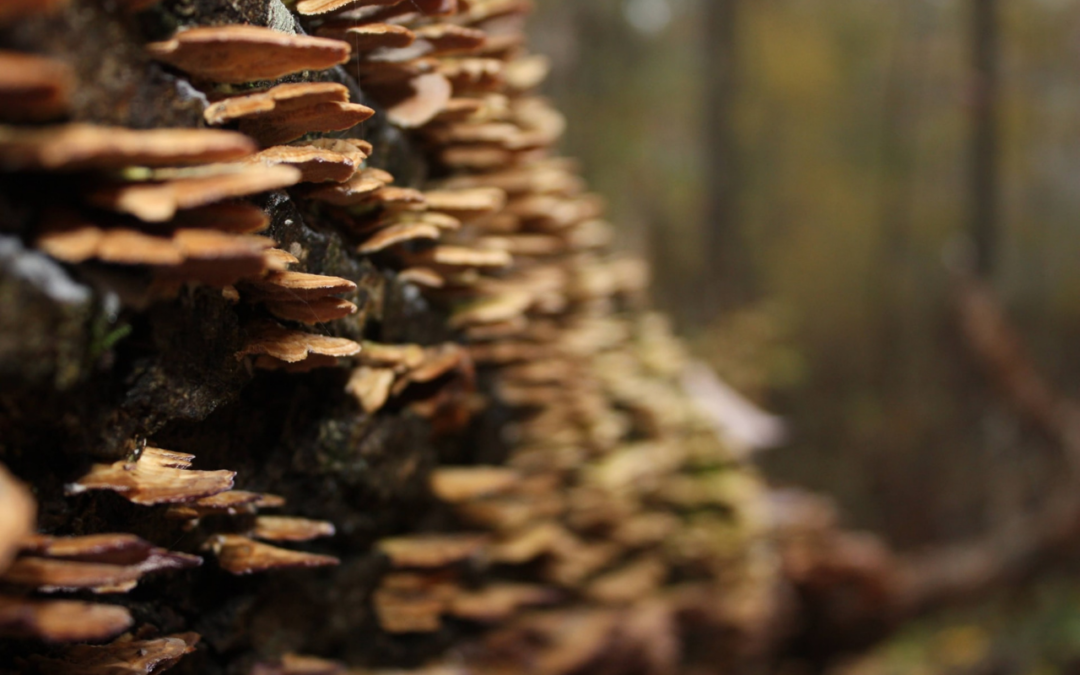How to Grow Mushrooms on Logs – A Step by Step Guide
In this article, we’ll share everything you need to grow mushrooms on logs. Including what types of mushrooms you can grow, what type of logs to use, and a step-by-step guide.
Growing Mushrooms on Logs
There are lots of reasons to consider growing mushrooms on logs. It’s a cost-effective way to produce fresh and healthy mushrooms. You don’t need a lot of space. A few logs are enough to experiment with so that you can get started growing mushrooms on logs.
Most hardwood species are good for growing both shiitake and oyster mushrooms. This means that you can choose your logs based on what type of hardwood is available on your land or in your area locally.
Depending on the strain you want to grow it’s good to know which types of wood different strains prefer. Shiitake prefer oak and maple whereas oyster mushrooms grow well on birch, beech, elm, and poplars.
How Long Does it Take to Grow Mushrooms on Logs?
Most mushrooms will take a minimum of one year to grow on logs and it’s not unusual for it to take up to two years after inoculation for logs to produce their first harvest. This is a test of patience but once logs begin to fruit they should provide mushrooms for around 6 or 7 years so it’s worth the wait!
What Kind Of Logs To Use?
Logs are best if harvested during the autumn or winter months. This is because in these seasons trees go into a period of dormancy. During this time their sugar concentration increases and bark stays attached better than it would in spring or summer.
Larger diameter wood is difficult to carry as well as being bulky which makes moving logs a difficult task. Consider the size of logs required and strike a balance between larger logs for higher yields and ease of managing the logs over a period of many years once they begin to fruit.
Where to Store Logs Following Inoculation
Following inoculation, keep logs somewhere shady, humid, and warm. Maintaining good air circulation is important to prevent the occurrence of mould. You will need access to a water supply close to where you choose to store your logs after inoculation because you will need to rinse them to keep them moist throughout the incubation and fruiting stages. It is likely that you’ll need to do this 2 to 3 times per week depending on the climate and time of year.
Any location that is accessible and in a relatively shaded area is fine for storing mushroom logs following inoculation. This could include against a wall or building to create some shade, under shade netting, or under the canopy of trees so that direct sunlight is reduced.
When Should You Inoculate Logs?
The best time of year to inoculate logs is in Spring after the last frosts have passed. Most wild mushrooms fruit during the autumn months so it’s best to inoculate your logs early to mid springtime so that your mushrooms have a chance to colonise the logs before indigenous strains take hold and compete with the mycelium you have inoculated your logs with.
How Many Spawn Plugs Will I Need?
A 4-foot log typically requires about 35 to 50 plugs for full coverage. Drill holes approximately every 6 inches along the length of the log. Holes should be a few millimetres deeper than the length of the spawn plugs that you have selected. This allows room for the plugs to be sealed into the log.
When your first row of holes is complete, position the next row of holes staggered diagonally to the first row. Start the next row of holes about 2.5 inches (6 cm) away from your first row of holes, and stagger the row to create a triangle pattern.
Next, insert the plugs into the logs. Plug spawn dowels should be easy to get started in the hole. Gently tap them with a hammer to get them fully inserted.
Plugs should be below the surface of the bark and flush with the actual wood of the log. That way you’ll be able to seal the hole up with wax.
Sealing The Plugged Holes
It’s important to seal the plugged holes to protect the mycelium and allow it to colonise the log. Non-toxic wax such as cheese wax, candle wax, or beeswax is effective to seal the plugs into the log. Heat the wax following the manufacturer’s instructions and apply wax to the holes using a wax dauber, with a light coating to completely seal each plug.
Harvesting Mushrooms Grown on Logs
Most mushrooms grown on logs will fruit once or twice per year. The best time to harvest mushrooms is whilst they are still quite young, within the first couple of weeks. Beyond this time, and particularly after around 3 weeks, mushrooms will become brittle and inedible. The caps begin to deteriorate and become prone to being infested by parasites and pests.
Shiitake mushrooms should be harvested when their caps are only just starting to open and are around 5 cm in diameter. This usually only takes 2 to 7 days after they begin growing. Check regularly once fruiting begins as they can grow very quickly.
Oyster mushrooms should be harvested while there is still a bit of a downward curl in their shape before the rim of the cap becomes completely straight and stretched out.
If you’re interested in growing mushrooms outdoors in a mushroom bed, you can find our guide here.


Trackbacks/Pingbacks